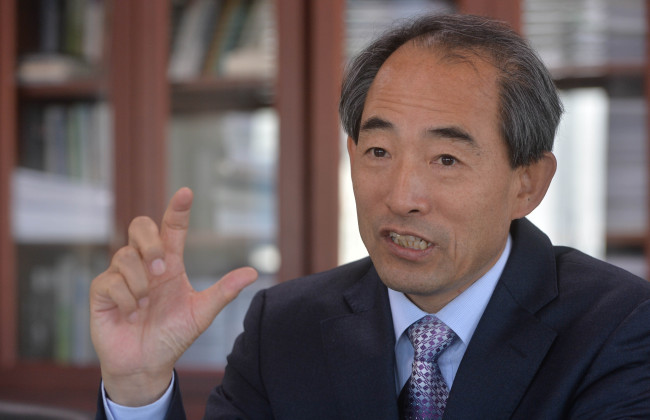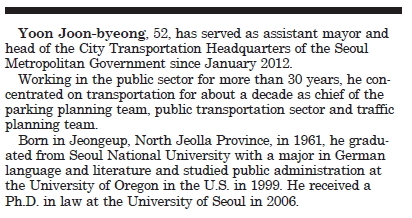High technology, customer service boost Seoul subway
Metropolis to expand express train operation in central areas, increase transit access for disabled
By Korea HeraldPublished : Nov. 15, 2013 - 21:05
Seoul is a latecomer in the history of the world’s subways. The city launched its first subway in 1974, more than 110 years after London unveiled the world’s first underground transit system, and even a year after North Korea opened its first metro line in Pyongyang.
Despite its young age, the Seoul subway has quickly won global recognition for its efficiency, accessibility and technological advancement. Recently, it was chosen by CNN as one of the nine major metros around the world. Its system has been exported to countries around the world including New Zealand, Colombia and Malaysia.
Despite its young age, the Seoul subway has quickly won global recognition for its efficiency, accessibility and technological advancement. Recently, it was chosen by CNN as one of the nine major metros around the world. Its system has been exported to countries around the world including New Zealand, Colombia and Malaysia.

Yoon Joon-byeong, assistant mayor and head of the City Transportation Headquarters at Seoul City, sees the country’s advanced IT technology, unified fare system and customer service-oriented policies as crucial success factors.
“The Seoul subway has applied the country’s information technology to its system in order to provide travel information in real-time and developed a unified fare system to offer greater convenience to passengers. And it is cheap.”
The unified fare system allows passengers to easily transfer between subways and buses without having to pay separately if traveling within 10 kilometers. Basic fare starts from 1,050 won ($0.98), approximately six times cheaper than that of London.
Yoon is in charge of planning and implementing the city’s overall transportation policies. The metro, however, has always been his top priority as it is convenient, economical and eco-friendly.
The city plans to streamline the connection between three core areas ― Gangnam, Yeouido and the central business district ― to significantly reduce travel time.
For instance, a one-way subway ride from north of the Hangang River to the south takes about 30 minutes on average. But the travel time between the two core areas will be shortened to 10 minutes by 2030 as the city plans to expand the operation of express trains in the central area of the city, Yoon said. The city will also improve transfers between the bus and subway under the current unified fare system, he added.
“More and more people will realize that taking public transportation will not only save money but also travel time,” he said.
Currently, the metro accounts for 36 percent of transit passengers in Seoul, a level lower when compared with that of other cities ― 86 percent in Tokyo, 65 percent in London and 58 percent in Paris.
In July, the Seoul city government announced an 8.5 trillion won project to build new light-rail lines over the next 10 years to reduce blind spots in its subway and bus networks.
The city plans to build nine new subterranean rail lines in the city’s northeastern, northwestern and southwestern districts where it takes more than 10 minutes to get to the nearest metro station.
Some civic groups, however, criticized that the multibillion-dollar light rail scheme as a pork-barrel project pushed by Mayor Park Won-soon, who is widely expected to run in next year’s local election.
Yoon claimed that the project is not politically motivated but is planned to support citizens facing difficulties in using public transit.
“We are expecting that the new lines will benefit the public transport system and increase the coverage rate of public transportation (metro and bus) from the current 64 percent to 75 percent,” he said.
The city also plans to improve air quality and transit access for those who have difficulties reaching underground transportation.
“We have been working to offer greater accessibility for the disabled, the elderly and young mothers with strollers. We are working on a project to increase the number of elevators for them,” he said.
Currently there are 842 elevators in 292 stations across the city. Yoon hopes to install at least three elevators in each of the 301 stations by 2017.
Profile of Yoon Joon-byeong

By Cho Chung-un, Lee Hyun-jeong
(christory@heraldcorp.com)
(rene@heraldcorp.com)
“The Seoul subway has applied the country’s information technology to its system in order to provide travel information in real-time and developed a unified fare system to offer greater convenience to passengers. And it is cheap.”
The unified fare system allows passengers to easily transfer between subways and buses without having to pay separately if traveling within 10 kilometers. Basic fare starts from 1,050 won ($0.98), approximately six times cheaper than that of London.
Yoon is in charge of planning and implementing the city’s overall transportation policies. The metro, however, has always been his top priority as it is convenient, economical and eco-friendly.
The city plans to streamline the connection between three core areas ― Gangnam, Yeouido and the central business district ― to significantly reduce travel time.
For instance, a one-way subway ride from north of the Hangang River to the south takes about 30 minutes on average. But the travel time between the two core areas will be shortened to 10 minutes by 2030 as the city plans to expand the operation of express trains in the central area of the city, Yoon said. The city will also improve transfers between the bus and subway under the current unified fare system, he added.
“More and more people will realize that taking public transportation will not only save money but also travel time,” he said.
Currently, the metro accounts for 36 percent of transit passengers in Seoul, a level lower when compared with that of other cities ― 86 percent in Tokyo, 65 percent in London and 58 percent in Paris.
In July, the Seoul city government announced an 8.5 trillion won project to build new light-rail lines over the next 10 years to reduce blind spots in its subway and bus networks.
The city plans to build nine new subterranean rail lines in the city’s northeastern, northwestern and southwestern districts where it takes more than 10 minutes to get to the nearest metro station.
Some civic groups, however, criticized that the multibillion-dollar light rail scheme as a pork-barrel project pushed by Mayor Park Won-soon, who is widely expected to run in next year’s local election.
Yoon claimed that the project is not politically motivated but is planned to support citizens facing difficulties in using public transit.
“We are expecting that the new lines will benefit the public transport system and increase the coverage rate of public transportation (metro and bus) from the current 64 percent to 75 percent,” he said.
The city also plans to improve air quality and transit access for those who have difficulties reaching underground transportation.
“We have been working to offer greater accessibility for the disabled, the elderly and young mothers with strollers. We are working on a project to increase the number of elevators for them,” he said.
Currently there are 842 elevators in 292 stations across the city. Yoon hopes to install at least three elevators in each of the 301 stations by 2017.
Profile of Yoon Joon-byeong

By Cho Chung-un, Lee Hyun-jeong
(christory@heraldcorp.com)
(rene@heraldcorp.com)
-
Articles by Korea Herald











![[Today’s K-pop] BTS pop-up event to come to Seoul](http://res.heraldm.com/phpwas/restmb_idxmake.php?idx=644&simg=/content/image/2024/04/17/20240417050734_0.jpg&u=)





![[KH Explains] Hyundai's full hybrid edge to pay off amid slow transition to pure EVs](http://res.heraldm.com/phpwas/restmb_idxmake.php?idx=652&simg=/content/image/2024/04/18/20240418050645_0.jpg&u=20240419100350)

